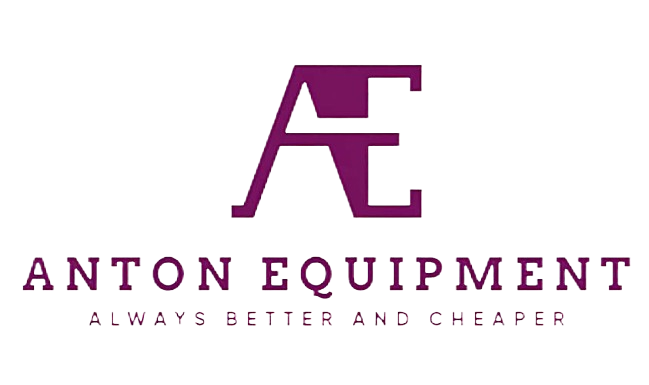News
Maximizing Excavator Attachments: Best Practices for Heavy-Duty Applications
Core Excavator Attachments for Heavy-Duty Operations
Hydraulic Breakers: Demolition Powerhouses
Hydraulic breakers are fundamental in dismantling concrete and asphalt, making them essential for any demolition project. They utilize hydraulic pressure to deliver substantial impact energy, proving indispensable in heavy-duty operations. While evaluating different sizes of breakers, factors such as vibration and noise levels become crucial, as they directly affect site safety and regulatory compliance. This means that understanding the specific needs and limitations of your site can guide you to choose a breaker that not only performs optimally but also maintains a safe working environment.
Excavator Augers: Precision Drilling Solutions
Excavator augers offer precision drilling capabilities, especially in diverse soil conditions, making them crucial for efficiently digging holes. The variety in auger sizes and types caters to specific tasks, whether you are installing fence posts, planting trees, or setting utility poles. One of the key advantages of using augers is their ability to minimize soil disruption. This reduction in disturbance is particularly important when operating in environmentally sensitive areas, where maintaining the site's natural integrity is of utmost importance.
Skid Steer Attachments vs. Mini Excavator Attachments
When comparing skid steer attachments to mini excavator attachments, one finds that skid steer attachments typically provide superior versatility for a wide range of applications. However, mini excavators excel in maneuverability, especially in confined urban settings due to their compact design. The choice between these options often rests on the intended application. Considering the specific demands of a project, including space limitations and task diversity, helps in selecting attachments that optimally enhance productivity and operational efficiency.
Load Capacity and Machine Compatibility
Understanding the load capacity and compatibility between the excavator and its attachments is paramount for ensuring safe and efficient operations. Load capacity is crucial; attachments that are too heavy for the machine can lead to instability and potential damage. Similarly, machine compatibility is critical as the hydraulic system of the excavator must match the requirements of the attachment. A mismatch can result in attachment malfunction or diminished productivity, which could lead to significant project delays. Therefore, evaluating the capacity and compatibility before purchasing any attachment is a necessary step in project planning.
Soil Type Considerations for Earth Augers
The type of soil on a job site plays a vital role in selecting the appropriate earth auger for optimal performance. Different soils, ranging from hard rocky types to soft sandy ones, necessitate specialized augers to ensure efficient digging. For instance, hard, rocky soils require sturdy, robust augers, while softer soils might be efficiently handled with standard augers. Choosing the wrong auger type can not only reduce efficiency but also increase the wear and tear on equipment, leading to escalated costs. Consequently, thorough soil evaluation before making a selection is indispensable for achieving project efficiency.
Specialized Mini Attachments for Tight Spaces
Specialized mini attachments provide the flexibility needed to operate effectively in tight and confined job sites. These attachments are designed to enhance the maneuverability and versatility of mini excavators, allowing them to perform a diverse range of tasks even in constrained spaces. By evaluating the site layout and understanding the planned tasks, one can determine which specialized mini attachments would best suit their operational needs. This strategic approach ensures that projects are not only executed efficiently but also maximizes the capabilities of the equipment being used.
Combining Attachments for Multi-Phase Projects
Strategically combining multiple attachments is pivotal for streamlining workflows and enhancing efficiency in multi-phase projects. By understanding each attachment's function, we can create a more seamless project timeline, effectively minimizing downtime. For example, utilizing augers for initial drilling and swiftly switching to hydraulic breakers for demolition can significantly optimize the sequence of tasks. This approach not only saves time but also maximizes the use of excavators, transforming them into versatile machines that handle numerous project phases with minimal interruption. Such strategic pairing of attachments highlights a key advantage in project versatility and efficiency.
Hydraulic Flow Management Strategies
Effective hydraulic flow management is crucial for ensuring that different attachments receive the necessary hydraulic power to function optimally. By adjusting flow rates, we can tailor the hydraulic performance to match varying operational demands, thereby enhancing attachment efficacy. Monitoring hydraulic pressure levels is equally important, as it helps maintain equipment integrity and prevents potential operational failures. These strategies enable us to extend the lifespan of attachments and improve project efficiency. Mastering hydraulic flow management not only safeguards the equipment but also ensures the project's success by maintaining smooth and effective operations.
Cold Weather Performance Enhancements
Cold weather can notably impact the performance of excavator attachments, demanding thoughtful preparation and adjustment. To combat viscosity issues in frigid temperatures, utilizing winter-grade hydraulic fluids is essential as it improves operational efficiency. Additionally, conducting regular maintenance checks during colder months can prevent equipment failures, ensuring both safety and performance. These enhancements in cold weather operations enable projects to continue without compromising on time or safety. By focusing on these performance strategies, we can ensure that the reliability and effectiveness of excavator attachments are maintained, even in challenging weather conditions.
Maintenance Protocols for Extended Attachment Life
Implementing daily inspection checklists is a cornerstone of effective maintenance protocols for excavator attachments. These checklists help identify potential issues early, preventing costly repairs and hazardous situations. Key areas of focus should include checking hydraulic lines for leaks, inspecting attachment integrity like cracks or corrosion, and examining wear indicators for signs of deterioration. Comprehensive documentation of these inspections not only enhances compliance with safety regulations but also promotes accountability in equipment usage, ensuring that each piece operates optimally across its lifecycle.
Greasing Procedures for Pivot Points
Maintaining regular greasing procedures for pivot points is essential to prolong the lifespan of excavator attachments by reducing friction. It's important to adhere to manufacturer-recommended greasing schedules, as these are designed to ensure each component functions optimally under various operational demands. Additionally, selecting the correct type of grease based on the attachment's use case contributes significantly to better operational performance, especially in heavy-duty applications. For example, high-temperature grease may be more suitable in environments where equipment is subject to intense heat.
Storage Solutions to Prevent Corrosion
Proper storage solutions are vital to prevent corrosion and damage when excavator attachments are not in use. By storing attachments in a dry, well-ventilated area or using protective coverings like tarps or specialized coatings, rust development can be significantly reduced. This practice not only increases the asset's longevity but also minimizes replacement costs. Adopting best practices such as regularly cleaning the attachments before storage, applying anti-corrosion sprays, and ensuring constant protection against moisture will further enhance the durability and reliability of your equipment.












































